For more than a decade, the demand for grid-connected solar installations in the U.S. has been on the rise, in part, because of economic and legislative incentives that encourage and often subsidize the installation of photovoltaic (PV) modules for residential and commercial applications. In the interest of improving energy efficiency, property owners, including businesses and homeowners, are turning to their roofs to support the PV systems.
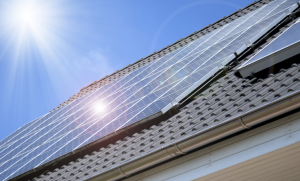
Solar PV panels are installed on
a roof by a mounting or racking
system. Building-integrated PV
modules replace the roofing material
and become a part of the roof.
There are two main types of PV modules that are being installed on steep- and low-slope roofs today: PV modules that are secured to the roof by a mounting or racking system and building-integrated PV modules (BIPV) that replace the roofing material and become part of the roof. The variety of components and installation techniques lends itself to closer scrutiny in testing each PV module.
ANSI/UL 1703
For more than a decade, manufacturers of flat-plate PV modules and solar panels have had their products tested and certified to meet the ANSI/UL 1703 regulatory standard to ensure their safety, performance and reliability before entering the market.
However, following recent field failures in which fire impacted the module differently than anticipated because of the way it was installed or interacted with the roof, as well as how the PV performed in extreme weather conditions, the ANSI/UL 1703 standard was updated for fire-resistance testing and classification requirements.
The changes to ANSI/UL 1703 require that testing for PV systems not solely be based on the rating for the individual modules, but instead that it takes into account a combined system rating. Stand-alone PV modules and PV modules with mounting or racking systems in combination with the roof covering must receive a fire rating, denoted by Class A, B or C. However, the same testing procedures do not apply for BIPV systems. They will continue to be tested to ANSI/UL 790, “Standard Test Methods for Fire Tests of Roof Coverings”.
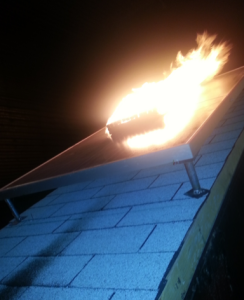
Fire resistance testing, such as Spread of Flames and Burning Brand tests, on solar PV roofing installations are tested in a lab and in the field.
Because of the changes to the ANSI/UL 1703 standard, manufacturers will be required to incorporate new and different testing procedures or potentially need to re-test previously tested products to comply with the standard. A PV panel will be required to obtain a classification “type” with construction review and testing, in addition to obtaining a fire rating for the PV system, which incorporates a module, mounting system and roof covering. The California State Fire Marshal announced the changes to ANSI/UL 1703 will go into effect in California starting Jan. 1, 2015, while changes to the code are set to go into effect in all states and other countries by Jan. 1, 2016.
THIRD-PARTY TESTING
Several solar PV manufacturers regularly work with companies, like Intertek, to ensure the quality and safety of their products, processes and systems. Intertek is one of the four Nationally Recognized Test Laboratories, including UL, CSA and TUV, recognized by Washington-based OSHA to conduct the ANSI/UL 1703 and ANSI/UL 790 testing in the U.S. Intertek has testing labs in Middleton, Wis., and Menlo Park, Calif., among others sites in the U.S. At Intertek, fire-resistance testing for steep-slope roofs is conducted using a “typical” roof as defined in the standard, which consists of 15/32-inch plywood (Spread of Flames) or 3/8-inch plywood (Burning Brand), 15-pound felt and Class A three-tab asphalt shingles. An alternate construction for the Spread of Flames test is to use any classified rolled asphalt membrane, mechanically secured over a non-combustible deck/material.
Low-slope roof testing has a slightly different construction, and the Spread of Flames test is the only test conducted. The low-slope roof consists of a 15/32-inch plywood substrate; 4 inches of polyisocyanurate insulation; and a single-ply, mechanically attached membrane. This membrane is required to have demonstrated a Class A fire rating. A typical membrane used for the testing is a 0.060-inch-thick EPDM roofing membrane.
Fire-resistance testing is just part of the rigorous testing criteria for PV modules; test requirements for the module’s power output, grounding, accelerated aging and conditioning, thermal cycling, UV exposure, and high humidity/freeze tests are also part of the performance testing process. To properly test and certify PV products for the solar market, third-party performance testing ensures independent verification of warranty claims, endurance, output, and functionality in a variety of climate or conditions.
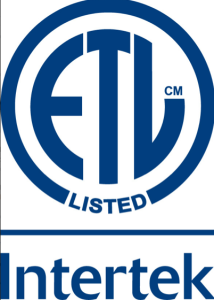 Products certified by Intertek will receive the ETL Listed Mark, which is required by the U.S. National Electrical Code for the sale of PV systems. Intertek certification provides assurance to roofing contractors, architects, and building owners that a product has not only been tested and met the necessary requirements, but also continues to do so even after installation. Further, Intertek’s ETL markings have long been recognized by regulatory bodies as a leading indicator of proof of conformance and quality for products throughout the U.S. and Canada. Code officials and inspectors, retailers and consumers across the U.S. accept the ETL Listed Mark as proof of product safety and quality. Today, the ETL Mark is the fastest-growing safety certification in North America and is featured on millions of products sold by major retailers and distributors every day.
Products certified by Intertek will receive the ETL Listed Mark, which is required by the U.S. National Electrical Code for the sale of PV systems. Intertek certification provides assurance to roofing contractors, architects, and building owners that a product has not only been tested and met the necessary requirements, but also continues to do so even after installation. Further, Intertek’s ETL markings have long been recognized by regulatory bodies as a leading indicator of proof of conformance and quality for products throughout the U.S. and Canada. Code officials and inspectors, retailers and consumers across the U.S. accept the ETL Listed Mark as proof of product safety and quality. Today, the ETL Mark is the fastest-growing safety certification in North America and is featured on millions of products sold by major retailers and distributors every day.
PHOTOS: Intertek
Learn More
For more information about the testing and certification process, download Intertek’s free white paper: “Photovoltaic Panel and Module Fire Resistance Testing: Comprehensive Guide to ANSI/UL 1703” at Intertek.com/energy/photovoltaic.
MORE ABOUT INTERTEK
In December 2013, Intertek acquired York, Pa.-based Architectural Testing Inc. to become one of the world’s largest quality-solutions providers to the building and construction products’ industry worldwide. From code compliance, performance testing, product inspection, certification and building verification services, Intertek offers its customers everything needed to get their product to market quickly and efficiently by offering total solutions. With a total network of more than 1,000 laboratories and offices and more than 36,000 people in more than 100 countries, Intertek supports companies’ success in the global marketplace by helping customers to meet end users’ expectations for safety, sustainability, performance, integrity and desirability in virtually any market worldwide. For more information about Intertek’s building products’ business, visit Intertek.com/building.

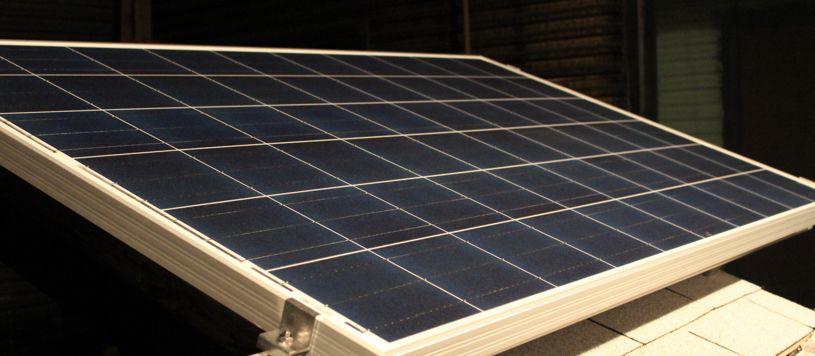
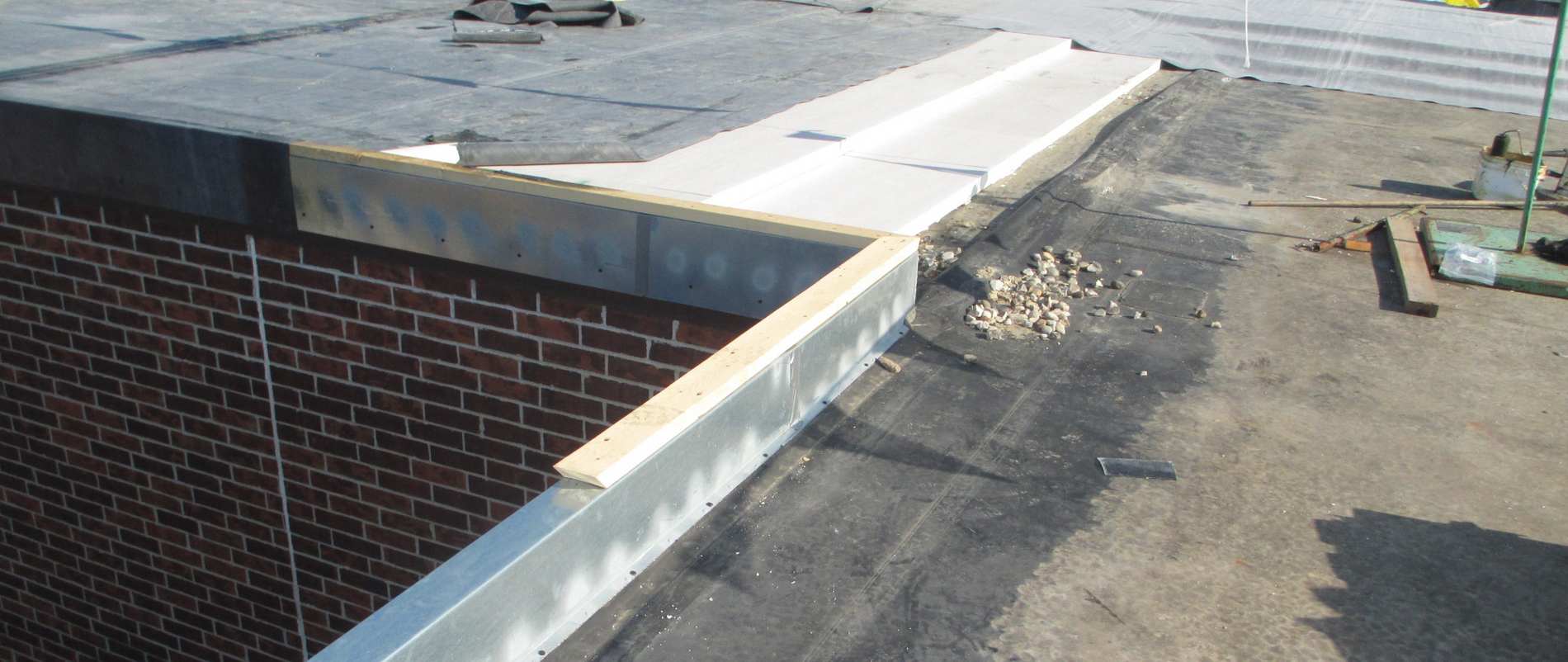

Be the first to comment on "Standards for Testing Solar PV Modules and Panels"